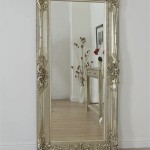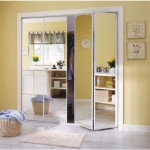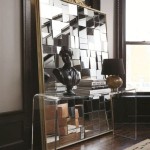How To Frame A Bathroom Mirror With Molding
Framing a bathroom mirror with molding is a simple yet effective way to elevate its appearance and enhance the overall aesthetic of the space. Molding adds architectural interest, complements the bathroom's design, and creates a more polished and cohesive look. This project, while requiring some basic DIY skills, is accessible to most homeowners and can be completed over a weekend. This guide will walk you through the steps involved in framing a bathroom mirror with molding, providing clear instructions and tips for success.
Choosing the Right Molding
The first step is to select the appropriate molding for your bathroom mirror. Consider the existing style of the bathroom, the size and shape of the mirror, and the overall design aesthetic. Here are some factors to consider:
- Material: Wood molding is a classic choice, offering durability and versatility. MDF (medium-density fiberboard) molding is another option, providing affordability and ease of installation. For a more contemporary look, consider using metal or plastic molding.
- Profile: The profile of the molding refers to its shape and design. Choose a profile that complements the style of your bathroom. For a traditional bathroom, consider ornate profiles with intricate details. For a modern bathroom, opt for simple, clean lines with a minimalist profile.
- Size: The width of the molding will determine the overall visual impact of the frame. A wider molding will create a more substantial frame, while a narrower molding will offer a subtler effect.
Visit a home improvement store or browse online catalogues to explore the vast selection of moldings available. Consider purchasing sample pieces to visually assess how they will look against your bathroom mirror and walls.
Measuring and Cutting the Molding
Once you have chosen your molding, it's time to measure and cut it to size. This step requires precision for a well-fitted frame.
- Measure the mirror: Carefully measure the width and height of the mirror, noting any irregularities or curves. Add the desired width of the molding to each measurement to determine the overall size of the frame.
- Cut the molding: Use a miter saw, a handsaw, or a chop saw to cut the molding to the precise lengths you measured. When cutting miter joints, ensure the angles are accurate to create a seamless frame. Mark the molding pieces clearly for easy identification.
- Dry-fit the frame: Before applying any adhesive, assemble the frame pieces without glue or nails to ensure a proper fit. This dry-fitting process allows you to make any necessary adjustments to the cuts before proceeding.
If you are working with a large mirror or intricate molding, it's helpful to enlist the assistance of another person to hold the pieces in place during dry-fitting.
Attaching the Molding to the Mirror
With the molding pieces cut and dry-fitted, you can attach them to the mirror using a strong adhesive. This method eliminates the need for nails or screws, preserving the integrity of the mirror's surface.
- Prepare the surfaces: Clean both the mirror and the back of the molding pieces with rubbing alcohol to remove any dirt, dust, or debris. Ensure the surfaces are dry before applying adhesive.
- Apply adhesive: Use a construction adhesive specifically designed for mirrors. Apply a thin, even bead of adhesive along the back edge of each molding piece, avoiding excessive amounts.
- Attach the molding: Carefully press the molding pieces onto the mirror, aligning them with the edges and ensuring a tight bond. Use clamps or weights to hold the molding in place until the adhesive fully dries.
Allow the adhesive to cure completely according to manufacturer instructions before handling the framed mirror. Once dry, the bond should be strong and durable.
Finishing Touches
After the adhesive has cured, you can add finishing touches to enhance the appearance of the framed mirror. These steps are optional but can make a significant difference.
- Caulk the seams: Apply a bead of caulk along the joints between the molding pieces to create a smooth and seamless frame.
- Paint or stain the frame: Consider painting or staining the frame to match the bathroom's color scheme or to create a desired contrast. Choose paint or stain that is suitable for the molding material used.
- Add embellishments: For a more elaborate design, consider adding decorative trim, embellishments, or accents to the frame. These details can further enhance the visual appeal of the framed mirror.
By following these guidelines, you can successfully frame a bathroom mirror with molding and create a custom-made piece that complements your design aspirations. This project adds a touch of sophistication and personality to your bathroom, elevating the overall aesthetic appeal of the space.

Diy Bathroom Mirror Frame With Molding The Happier Homemaker

Easy Diy Tutorial Adding Trim Around A Giant Mirror For Ers

Bathroom Mirror Framed With Crown Molding Large Mirrors Frame Makeover

How To Frame A Mirror

Framing A Bathroom Mirror Tempting Thyme

How To Frame Out That Builder Basic Bathroom Mirror For 20 Or Less

How To Frame A Bathroom Mirror

How To Make An Easy Diy Bathroom Mirror Frame Momhomeguide Com

How To Frame A Mirror Sand And Sisal

How To Frame A Mirror With Molding And Save Over 300








